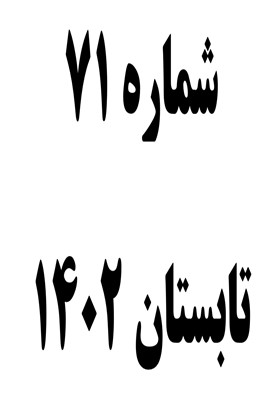-
-
List of Articles
-
Open Access Article
1 - The study of Abdolhossein Khan Moazezolmolk Teymourtash's performance from Majlis-e-Shouraye Melli (The National Consultative Assembly) to the establishment of Majlis-e-Moassesan (Constituent Assembly).
Sayed Hamid Fakhr Jafari Omid Sepehri Abolhasan Mobayen -
Open Access Article
2 - The nature of Sasanian political legitimacy in Yaqoubi historiography Community Verified icon
morteza hasannegead ابوالفضل رضوی محمد سپهری -
Open Access Article
3 - The role of Iranian elites and poets in the scientific - literary movement of the era of Akbar Shah Gorkani (1556-1605)
Rohama Bordbar mahmood seyyed Reza Dehghani -
Open Access Article
4 - Radān duties in the Sassanid period from the Mādayān ī Hazār Dādestān
zahra hisseini -
Open Access Article
5 - The position of Khwaja Ahmad Yessavi in Sufism and Islamic mysticism
habib safarzadeh -
Open Access Article
6 - The role and position of Mozhaj tribe in scientific and cultural developments
Fahimeh Nasrollahi -
Open Access Article
7 - Chamshgazak Kurdish tribe and protection of the northeastern borders of Iran after the eleventh century AH
ali bagherzadeh shahrbanoo delbari -
Open Access Article
8 - Historical Understanding of the Position of Women in the Timurid Court according to Clavijo's Itinerary(corrected)
leila mohammadi
-
The rights to this website are owned by the Raimag Press Management System.
Copyright © 2021-2025







